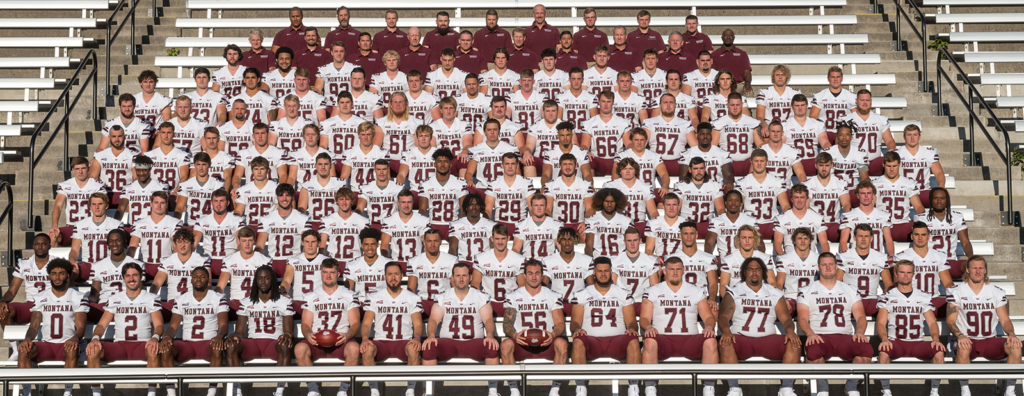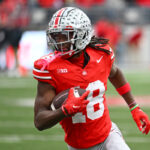Team History
The Montana Grizzlies football team, rooted deeply in the traditions and history of the University of Montana, has evolved significantly since its inception in 1897. Initially competing against local schools, the team’s early years were marked by modest achievements and growing pains typical of nascent sports programs. The establishment of the Northwest Intercollegiate Athletic Association in 1902 was a pivotal moment, broadening the scope of competition and laying the groundwork for future development. However, victories against Northwest Conference opponents were hard-fought and rare, with the team not securing a win until 1914 against Washington State. This era laid the foundational ethos of perseverance and determination that would characterize the Grizzlies in the decades to follow.
Transitioning into the Pacific Coast Conference in 1924 represented a step up in competition, pitting the Grizzlies against more formidable opponents until 1949. Despite limited success in terms of wins and losses during this period, these challenges contributed to the team’s resilience and tactical evolution. The experiences garnered in the Pacific Coast Conference prepared Montana for future successes, ingraining a competitive spirit and an unyielding resolve that remains a hallmark of Grizzly football.
Foundation and Early Years
The Montana Grizzlies’ journey commenced with the university’s recognition of football as a collegiate sport in 1893, setting the stage for what would become a storied athletic program. The team’s first official game in 1893 against the Butte Athletic Club, although a defeat, marked the beginning of a legacy characterized by tenacity and community support. The early years were challenging, with obstacles such as limited resources, absence of dedicated facilities, and the task of cultivating a football culture from the ground up. Yet, the foundational members, including students, faculty, and local enthusiasts, were instrumental in overcoming these hurdles, driven by a shared vision of competitive excellence.
This period not only tested the resolve of the Grizzlies but also fostered a sense of identity and pride that would propel the team forward. Despite the adversities faced, the early endeavors laid a strong foundation for the program, gradually building its reputation within the collegiate football landscape. The team’s persistence through these formative years underscored a commitment to athletic achievement that would come to define Montana Grizzlies football.
Notable Early Achievements
The formative years of Montana Grizzlies football were characterized by incremental progress and the establishment of traditions that continue to this day. Among the significant early achievements was the team’s first victory against a Northwest Conference opponent in 1914, a milestone that signified the Grizzlies’ growing competitiveness on the regional stage. This victory was a harbinger of future successes and marked the beginning of Montana’s ascent in collegiate football. The early 20th century also saw the Grizzlies navigate the challenges of World War I and the 1918 flu pandemic, times during which the team’s operations were temporarily suspended. These interruptions, though significant, did not deter the program’s momentum, as it continued to build its identity and competitive spirit in the years that followed.
The 1920s and 1930s brought further development and challenges, including the team’s participation in the Pacific Coast Conference and the tenure of coach Doug Fessenden, who was instrumental in steering the program through periods of change and uncertainty. Under Fessenden’s guidance, the Grizzlies began to establish a reputation for resilience and tenacity, traits that would become synonymous with Montana football. These early achievements set the stage for the Grizzlies’ eventual rise to prominence, laying the groundwork for a culture of excellence and a legacy of success that continues to define the program.
Periods of Change
Throughout its history, the Montana Grizzlies football program has experienced several periods of significant change, each shaping the team’s direction and fortunes. The transition between conferences, from the Northwest Intercollegiate Athletic Association to the Pacific Coast Conference and eventually to the Big Sky Conference, highlighted the program’s evolving competitive landscape. Each shift brought new challenges and opportunities, requiring adaptations in strategy, recruitment, and team culture. The mid-20th century decisions, particularly the move to de-emphasize athletics in favor of academic pursuits in 1948, underscored the university’s commitment to maintaining a balance between sports and education, a philosophy that continues to influence the program’s ethos.
The 1960s and 1970s marked another pivotal era of change under the leadership of coaches like Jack Swarthout, who introduced innovative strategies and led the team to notable successes, including conference titles and national championship appearances. These periods of change were not without their challenges, including controversies and setbacks that tested the program’s resilience. However, the Grizzlies’ ability to adapt and grow through these times of transition has been a testament to the strength of the program and its enduring commitment to excellence.
Championships and Achievements
The legacy of the Montana Grizzlies is highlighted by their achievements on the national stage, including two FCS national championships in 1995 and 2001. These victories are emblematic of the program’s ascent to prominence within collegiatefootball, with the Grizzlies capturing the Big Sky Conference title numerous times.
These championships not only underscore the team’s competitive prowess but also its role as a cornerstone of pride for the University of Montana and its broader community. The Grizzlies’ playoff appearances, often deep into the postseason, reflect a consistency and excellence that few programs can match. Their ability to compete at the highest levels of FCS football, attract top coaching talents, and develop NFL-caliber players has cemented their status as one of the premier programs in the nation.
Current Roster
The composition of the current Montana Grizzlies roster reflects a diverse mix of talent, dedication, and potential, embodying the program’s rich tradition and commitment to excellence. This roster, a blend of experienced upperclassmen and promising underclassmen, is poised to continue the Grizzlies’ legacy of competitive performance and sportsmanship.
The team’s depth across positions allows for a dynamic and versatile approach to gameplay, adapting to the evolving landscape of college football with agility and strategic foresight. The development of these athletes, under the guidance of a seasoned coaching staff, is a testament to the program’s enduring commitment to nurturing talent and achieving success both on and off the field.
Management and Coaching Staff
Under the leadership of head coach Bobby Hauck, who returned to the program in 2017 after a previous successful tenure, the Montana Grizzlies have re-established themselves as a dominant force in FCS football. Hauck’s coaching philosophy, emphasizing discipline, teamwork, and a relentless pursuit of excellence, has been instrumental in the program’s recent successes.
The coaching staff, comprising experienced assistants and coordinators, works synergistically to develop player talents, implement innovative strategies, and foster a winning culture within the team. This collective leadership approach has enabled the Grizzlies to navigate the challenges of competitive college football, maintaining their status as perennial contenders in the Big Sky Conference and beyond.
Home Stadium Information
Washington-Grizzly Stadium, the home of Montana Grizzlies football, is more than just an athletic venue; it’s a symbol of community pride and a center for college football in Montana. With a seating capacity that ranks among the largest in the FCS, the stadium provides an electrifying atmosphere for home games, drawing fans from across the state and region.
The facility is not only a testament to the university’s commitment to its athletic programs but also a key factor in the Grizzlies’ home-field advantage, contributing to the team’s impressive record at home. The modern amenities and historical significance of Washington-Grizzly Stadium enhance the game-day experience, making it a landmark destination for college football enthusiasts.
-
*********** ***** ******* *** ***** ** ************ **** ********* *****dd.mm.yyyy 00:00 PM
-
****** *********** **** ** ***** ****** *** **** *** ******: ********* *** ******* *** ****'* ****dd.mm.yyyy 00:00 PM
-
*********-***** ********: **** 6 **** *** ***** *** * ********* **** 7dd.mm.yyyy 00:00 PM
-
**********-************ *******: ****** ****ć, ******* *******, *** * ********* ********** ********dd.mm.yyyy 00:00 PM
-
********* **** ********* ** *** ***: ********* *** ********* ** ****** ******** **. *** *** *****dd.mm.yyyy 00:00 PM
-
****************** ******* **********: *** ********' **** ****dd.mm.yyyy 00:00 PM







